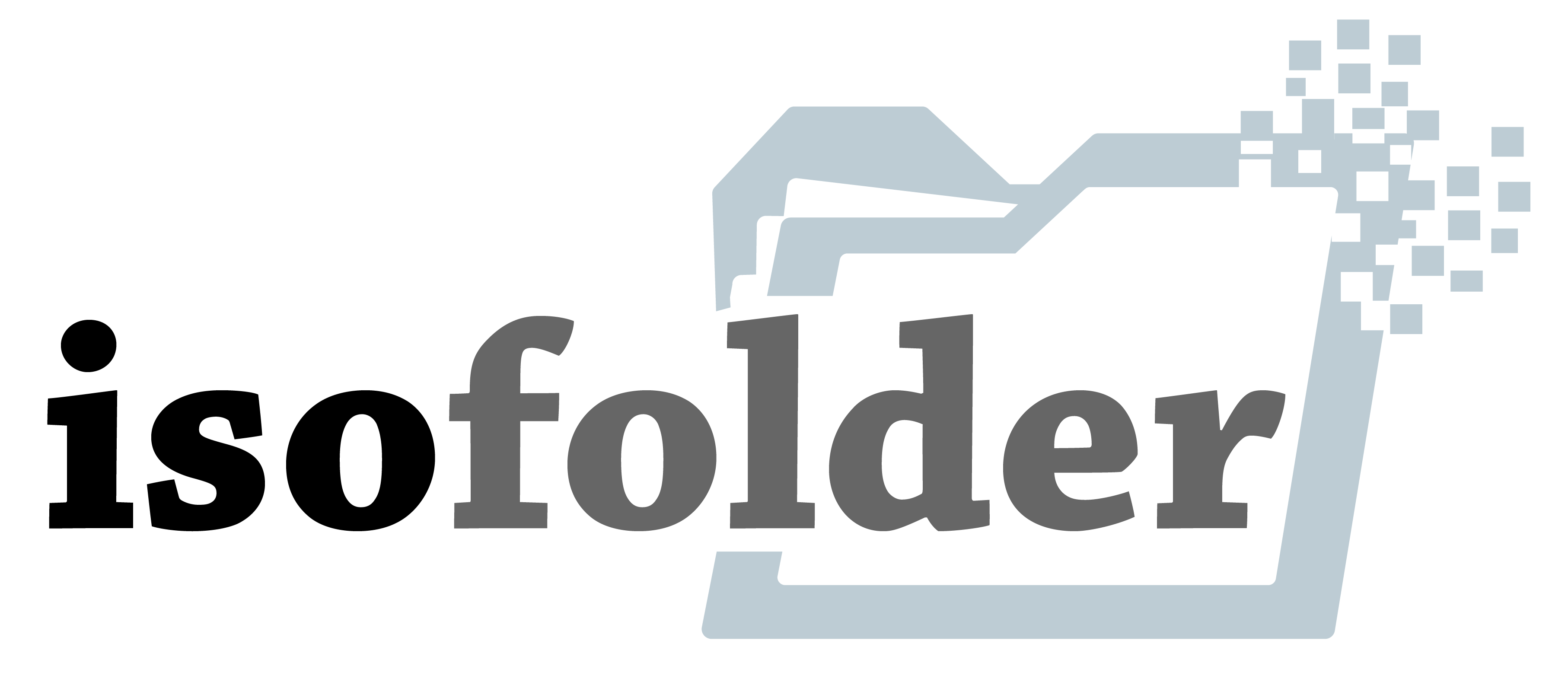Foreword
ISO (the International Organization for Standardization) is a worldwide federation of national standards bodies (ISO member bodies). The work of preparing International Standards is normally carried out through ISO technical committees. Each member body interested in a subject for which a technical committee has been established has the right to be represented on that committee. International organizations, governmental and non-governmental, in liaison with ISO, also take part in the work. ISO collaborates closely with the International Electrotechnical Commission (IEC) on all matters of electrotechnical standardization.
The procedures used to develop this document and those intended for its further maintenance are described in the ISO/IEC Directives, Part 1. In particular the different approval criteria needed for the different types of ISO documents should be noted. This document was drafted in accordance with the editorial rules of the ISO/IEC Directives, Part 2 (see www.iso.org/directives).
Attention is drawn to the possibility that some of the elements of this document may be the subject of patent rights. ISO shall not be held responsible for identifying any or all such patent rights. Details of any patent rights identified during the development of the document will be in the Introduction and/or on the ISO list of patent declarations received (see www.iso.org/patents).
Any trade name used in this document is information given for the convenience of users and does not constitute an endorsement.
For an explanation on the meaning of ISO specific terms and expressions related to conformity assessment, as well as information about ISO’s adherence to the World Trade Organization (WTO) principles in the Technical Barriers to Trade (TBT) see the following URL: www.iso.org/iso/foreword.html.
The committee responsible for this document is Project Committee ISO/PC 278, Anti-bribery management systems.
Introduction
Bribery is a widespread phenomenon. It raises serious social, moral, economic and political concerns, undermines good governance, hinders development and distorts competition. It erodes justice, undermines human rights and is an obstacle to the relief of poverty. It also increases the cost of doing business, introduces uncertainties into commercial transactions, increases the cost of goods and services, diminishes the quality of products and services, which can lead to loss of life and property, destroys trust in institutions and interferes with the fair and efficient operation of markets.
Governments have made progress in addressing bribery through international agreements such as the Organization for Economic Co-operation and Development Convention on Combating Bribery of Foreign Public Officials in International Business Transactions[15] and the United Nations Convention against Corruption[14] and through their national laws. In most jurisdictions, it is an offence for individuals to engage in bribery and there is a growing trend to make organizations, as well as individuals, liable for bribery.
However, the law alone is not sufficient to solve this problem. Organizations have a responsibility to proactively contribute to combating bribery. This can be achieved by an anti-bribery management system, which this document is intended to provide, and through leadership commitment to establishing a culture of integrity, transparency, openness and compliance. The nature of an organization’s culture is critical to the success or failure of an anti-bribery management system.
A well-managed organization is expected to have a compliance policy supported by appropriate management systems to assist it in complying with its legal obligations and commitment to integrity. An anti-bribery policy is a component of an overall compliance policy. The anti-bribery policy and supporting management system helps an organization to avoid or mitigate the costs, risks and damage of involvement in bribery, to promote trust and confidence in business dealings and to enhance its reputation.
This document reflects international good practice and can be used in all jurisdictions. It is applicable to small, medium and large organizations in all sectors, including public, private and not-for-profit sectors. The bribery risks facing an organization vary according to factors such as the size of the organization, the locations and sectors in which the organization operates, and the nature, scale and complexity of the organization’s activities. This document specifies the implementation by the organization of policies, procedures and controls which are reasonable and proportionate according to the bribery risks the organization faces. Annex A provides guidance on implementing the requirements of this document.
Conformity with this document cannot provide assurance that no bribery has occurred or will occur in relation to the organization, as it is not possible to completely eliminate the risk of bribery. However, this document can help the organization implement reasonable and proportionate measures designed to prevent, detect and respond to bribery.
In this document, the following verbal forms are used:
- — “shall” indicates a requirement;
- — “should” indicates a recommendation;
- — “may” indicates a permission;
- — “can” indicates a possibility or a capability.
Information marked as “NOTE” is for guidance in understanding or clarifying the associated requirement.
This document conforms to ISO’s requirements for management system standards. These requirements include a high level structure, identical core text, and common terms with core definitions, designed to benefit users implementing multiple ISO management system standards. This document can be used in conjunction with other management system standards (e.g. ISO 9001, ISO 14001, ISO/IEC 27001 and ISO 19600) and management standards (e.g. ISO 26000 and ISO 31000).
1 Scope
This document specifies requirements and provides guidance for establishing, implementing, maintaining, reviewing and improving an anti-bribery management system. The system can be stand-alone or can be integrated into an overall management system. This document addresses the following in relation to the organization’s activities:
- — bribery in the public, private and not-for-profit sectors;
- — bribery by the organization;
- — bribery by the organization’s personnel acting on the organization’s behalf or for its benefit;
- — bribery by the organization’s business associates acting on the organization’s behalf or for its benefit;
- — bribery of the organization;
- — bribery of the organization’s personnel in relation to the organization’s activities;
- — bribery of the organization’s business associates in relation to the organization’s activities;
- — direct and indirect bribery (e.g. a bribe offered or accepted through or by a third party).
This document is applicable only to bribery. It sets out requirements and provides guidance for a management system designed to help an organization to prevent, detect and respond to bribery and comply with anti-bribery laws and voluntary commitments applicable to its activities.
This document does not specifically address fraud, cartels and other anti-trust/competition offences, money-laundering or other activities related to corrupt practices, although an organization can choose to extend the scope of the management system to include such activities.
The requirements of this document are generic and are intended to be applicable to all organizations (or parts of an organization), regardless of type, size and nature of activity, and whether in the public, private or not-for-profit sectors. The extent of application of these requirements depends on the factors specified in 4.1, 4.2 and 4.5.
NOTE 1 See Clause A.2 for guidance.
NOTE 2 The measures necessary to prevent, detect and mitigate the risk of bribery by the organization can be different from the measures used to prevent, detect and respond to bribery of the organization (or its personnel or business associates acting on the organization’s behalf). See A.8.4 for guidance.
2 Normative references
There are no normative references in this document.
3 Terms and definitions
For the purposes of this document, the following terms and definitions apply.
ISO and IEC maintain terminological databases for use in standardization at the following addresses:
- — ISO Online browsing platform: available at http://www.iso.org/obp
- — IEC Electropedia: available at http://www.electropedia.org/
3.1
bribery
offering, promising, giving, accepting or soliciting of an undue advantage of any value (which could be financial or non-financial), directly or indirectly, and irrespective of location(s), in violation of applicable law, as an inducement or reward for a person acting or refraining from acting in relation to the performance (3.16) of that person’s duties
Note 1 to entry: The above is a generic definition. The meaning of the term “bribery” is as defined by the anti-bribery law applicable to the organization (3.2) and by the anti-bribery management system (3.5) designed by the organization.
3.2
organization
person or group of people that has its own functions with responsibilities, authorities and relationships to achieve its objectives (3.11)
Note 1 to entry: The concept of organization includes, but is not limited to sole-trader, company, corporation, firm, enterprise, authority, partnership, charity or institution, or part or combination thereof, whether incorporated or not, public or private.
Note 2 to entry: For organizations with more than one operating unit, one or more of the operating units can be defined as an organization.
3.3
interested party (preferred term)
stakeholder (admitted term)
person or organization (3.2) that can affect, be affected by, or perceive itself to be affected by a decision or activity
Note 1 to entry: A stakeholder can be internal or external to the organization.
3.4
requirement
need that is stated and obligatory
Note 1 to entry: The core definition of “requirement” in ISO management system standards is “need or expectation that is stated, generally implied or obligatory”. “Generally implied requirements” are not applicable in the context of anti-bribery management.
Note 2 to entry: “Generally implied” means that it is custom or common practice for the organization and interested parties that the need or expectation under consideration is implied.
Note 3 to entry: A specified requirement is one that is stated, for example in documented information.
3.5
management system
set of interrelated or interacting elements of an organization (3.2) to establish policies (3.10) and objectives (3.11) and processes (3.15) to achieve those objectives
Note 1 to entry: A management system can address a single discipline or several disciplines.
Note 2 to entry: The management system elements include the organization’s structure, roles and responsibilities, planning and operation.
Note 3 to entry: The scope of a management system may include the whole of the organization, specific and identified functions of the organization, specific and identified sections of the organization, or one or more functions across a group of organizations.
3.6
top management
person or group of people who directs and controls an organization (3.2) at the highest level
Note 1 to entry: Top management has the power to delegate authority and provide resources within the organization.
Note 2 to entry: If the scope of the management system (3.5) covers only part of an organization, then top management refers to those who direct and control that part of the organization.
Note 3 to entry: Organizations can be organized depending on which legal framework they are obliged to operate under and also according to their size, sector, etc. Some organizations have both a governing body (3.7) and top management, while some organizations do not have responsibilities divided into several bodies. These variations, both in respect of organization and responsibilities, can be considered when applying the requirements in Clause 5.
3.7
governing body
group or body that has the ultimate responsibility and authority for an organization’s (3.2) activities, governance and policies and to which top management (3.6) reports and by which top management is held accountable
Note 1 to entry: Not all organizations, particularly small organizations, will have a governing body separate from top management (see 3.6, Note 3 to entry).
Note 2 to entry: A governing body can include, but is not limited to, board of directors, committees of the board, supervisory board, trustees or overseers.
3.8
anti-bribery compliance function
person(s) with responsibility and authority for the operation of the anti-bribery management system (3.5)
3.9
effectiveness
extent to which planned activities are realized and planned results achieved
3.10
policy
intentions and direction of an organization (3.2), as formally expressed by its top management (3.6) or its governing body (3.7)
3.11
objective
result to be achieved
Note 1 to entry: An objective can be strategic, tactical or operational.
Note 2 to entry: Objectives can relate to different disciplines (such as financial, sales and marketing, procurement, health and safety, and environmental goals) and can apply at different levels (such as strategic, organization-wide, project, product and process (3.15)).
Note 3 to entry: An objective can be expressed in other ways, e.g. as an intended outcome, a purpose, an operational criterion, as an anti-bribery objective, or by the use of other words with similar meaning (e.g. aim, goal, or target).
Note 4 to entry: In the context of anti-bribery management systems (3.5), anti-bribery objectives are set by the organization (3.2), consistent with the anti-bribery policy (3.10), to achieve specific results.
3.12
risk
effect of uncertainty on objectives (3.11)
Note 1 to entry: An effect is a deviation from the expected — positive or negative.
Note 2 to entry: Uncertainty is the state, even partial, of deficiency of information related to, understanding or knowledge of, an event, its consequence or likelihood.
Note 3 to entry: Risk is often characterized by reference to potential “events” (as defined in ISO Guide 73:2009, 3.5.1.3) and “consequences” (as defined in ISO Guide 73:2009, 3.6.1.3), or a combination of these.
Note 4 to entry: Risk is often expressed in terms of a combination of the consequences of an event (including changes in circumstances) and the associated “likelihood” (as defined in ISO Guide 73:2009, 3.6.1.1) of occurrence.
3.13
competence
ability to apply knowledge and skills to achieve intended results
3.14
documented information
information required to be controlled and maintained by an organization (3.2) and the medium on which it is contained
Note 1 to entry: Documented information can be in any format and media, and from any source.
Note 2 to entry: Documented information can refer to: — the management system (3.5), including related processes (3.15); — information created in order for the organization to operate (documentation); — evidence of results achieved (records).
3.15
process
set of interrelated or interacting activities which transforms inputs into outputs
3.16
performance
measurable result
Note 1 to entry: Performance can relate either to quantitative or qualitative findings.
Note 2 to entry: Performance can relate to the management of activities, processes (3.15), products (including services), systems or organizations (3.2).
3.17
outsource (verb)
make an arrangement where an external organization (3.2) performs part of an organization’s function or process (3.14)
Note 1 to entry: An external organization is outside the scope of the management system (3.5), although the outsourced function or process is within the scope.
Note 2 to entry: The core text of ISO management system standards contains a definition and requirement in relation to outsourcing, which is not used in this document, as outsourcing providers are included within the definition of business associate (3.26).
3.18
monitoring
determining the status of a system, a process (3.15) or an activity
Note 1 to entry: To determine the status, there can be a need to check, supervise or critically observe.
3.19
measurement
process (3.15) to determine a value
3.20
audit
systematic, independent and documented process (3.15) for obtaining audit evidence and evaluating it objectively to determine the extent to which the audit criteria are fulfilled
Note 1 to entry: An audit can be an internal audit (first party) or an external audit (second party or third party), and it can be a combined audit (combining two or more disciplines).
Note 2 to entry: An internal audit is conducted by the organization (3.2) itself, or by an external party on its behalf.
Note 3 to entry: “Audit evidence” and “audit criteria” are defined in ISO 19011.
3.21
conformity
fulfilment of a requirement (3.4)
3.22
nonconformity
non-fulfilment of a requirement (3.4)
3.23
corrective action
action to eliminate the cause of a nonconformity (3.22) and to prevent recurrence
3.24
continual improvement
recurring activity to enhance performance (3.16)
3.25
personnel
organization’s (3.2) directors, officers, employees, temporary staff or workers, and volunteers
Note 1 to entry: Different types of personnel pose different types and degrees of bribery risk (3.12) and can be treated differently by the organization’s bribery risk assessment and bribery risk management procedures.
Note 2 to entry: See A.8.5 for guidance on temporary staff or workers.
3.26
business associate
external party with whom the organization (3.2) has, or plans to establish, some form of business relationship
Note 1 to entry: Business associate includes but is not limited to clients, customers, joint ventures, joint venture partners, consortium partners, outsourcing providers, contractors, consultants, sub-contractors, suppliers, vendors, advisors, agents, distributors, representatives, intermediaries and investors. This definition is deliberately broad and should be interpreted in line with the bribery risk (3.12) profile of the organization to apply to business associates which can reasonably expose the organization to bribery risks.
Note 2 to entry: Different types of business associate pose different types and degrees of bribery risk, and an organization (3.2) will have differing degrees of ability to influence different types of business associate. Different types of business associate can be treated differently by the organization’s bribery risk assessment and bribery risk management procedures.
Note 3 to entry: Reference to “business” in this document can be interpreted broadly to mean those activities that are relevant to the purposes of the organization’s existence.
3.27
public official
person holding a legislative, administrative or judicial office, whether by appointment, election or succession, or any person exercising a public function, including for a public agency or public enterprise, or any official or agent of a public domestic or international organization, or any candidate for public office
Note 1 to entry: For examples of individuals who can be considered to be public officials, see Clause A.21.
3.28
third party
person or body that is independent of the organization (3.2)
Note 1 to entry: All business associates (3.26) are third parties, but not all third parties are business associates
3.29
conflict of interest
situation where business, financial, family, political or personal interests could interfere with the judgment of persons in carrying out their duties for the organization (3.2)
3.30
due diligence
process (3.15) to further assess the nature and extent of the bribery risk (3.12) and help organizations (3.2) make decisions in relation to specific transactions, projects, activities, business associates (3.26) and personnel.
Bibliography
| [1] | ISO 9000, Quality management systems — Fundamentals and vocabulary |
| [2] | ISO 9001, Quality management systems — Requirements |
| [3] | ISO 19011, Guidelines for auditing management systems |
| [4] | ISO 14001, Environmental management systems — Requirements with guidance for use |
| [5] | ISO/IEC 17000, Conformity assessment — Vocabulary and general principles |
| [6] | ISO 19600, Compliance management systems — Guidelines |
| [7] | ISO 22000, Food safety management systems — Requirements for any organization in the food chain |
| [8] | ISO 26000, Guidance on social responsibility |
| [9] | ISO/IEC 27001, Information technology — Security techniques — Information security management systems — Requirements |
| [10] | ISO 31000, Risk management — Principles and guidelines |
| [11] | ISO Guide 73, Risk management — Vocabulary |
| [12] | ISO/IEC Guide 2, Standardization and related activities — General vocabulary |
| [13] | BS 10500, Specification for an anti-bribery management system |
| [14] | United Nations Convention against Corruption, New York, 2004. Available at: http://www.unodc.org/documents/treaties/UNCAC/Publications/Convention/08-50026_E.pdf |
| [15] | Organization for Economic Co-operation and Development, Convention on Combating Bribery of Foreign Public Officials in International Business Transactions and Related Documents, Paris, 2010 |
| [16] | Organization for Economic Co-operation and Development, Good Practice Guidance on Internal Controls, Ethics, and Compliance, Paris, 2010 |
| [17] | Organization for Economic Co-operation and Development, Commentaries on the Convention on Combating Bribery of Foreign Public Officials in International Business Transactions, 21 November 1997 |
| [18] | United Nations Global Compact/Transparency International, Reporting guidance on the 10th principle against corruption, 2009 |
| [19] | International Chamber of Commerce, Transparency International, United Nations Global Compact and World Economic Forum, RESIST: Resisting Extortion and Solicitation in International Transactions, A company tool for employee training, 2010 |
| [20] | International Chamber of Commerce, Rules on Combating Corruption, Paris, 2011 |
| [21] | Transparency International, Business Principles for Countering Bribery and associated tools, Berlin, 2013 |
| [22] | Transparency International, Corruption Perceptions Index |
| [23] | Transparency International, Bribe Payers Index |
| [24] | World Bank, Worldwide Governance Indicators |
| [25] | International Corporate Governance Network, ICGN Statement and Guidance on Anti-Corruption Practices, London, 2009 |
| [26] | World Economic Forum, Partnering Against Corruption Principles for Countering Bribery, An Initiative of the World Economic Forum in Partnership with Transparency International and the Basel Institute on Governance, Geneva |
| [27] | Committee of the Sponsoring Organizations of the Treadway Commission (COSO): Internal Control – Integrated Framework, May 2013 |

 Documentation Kit
Documentation Kit Training Material
Training Material Self-Paced Trainings
Self-Paced Trainings